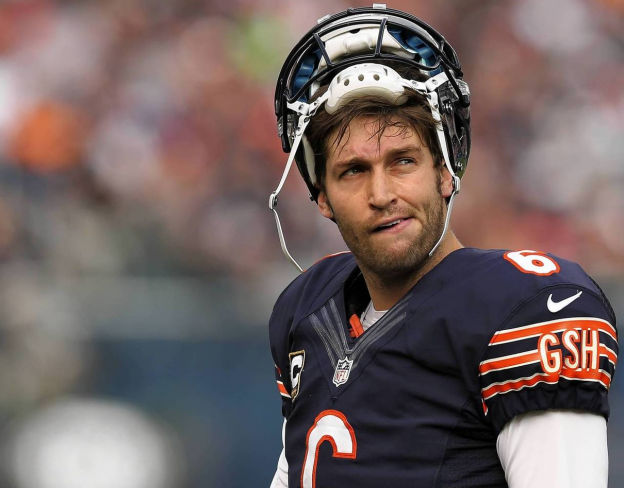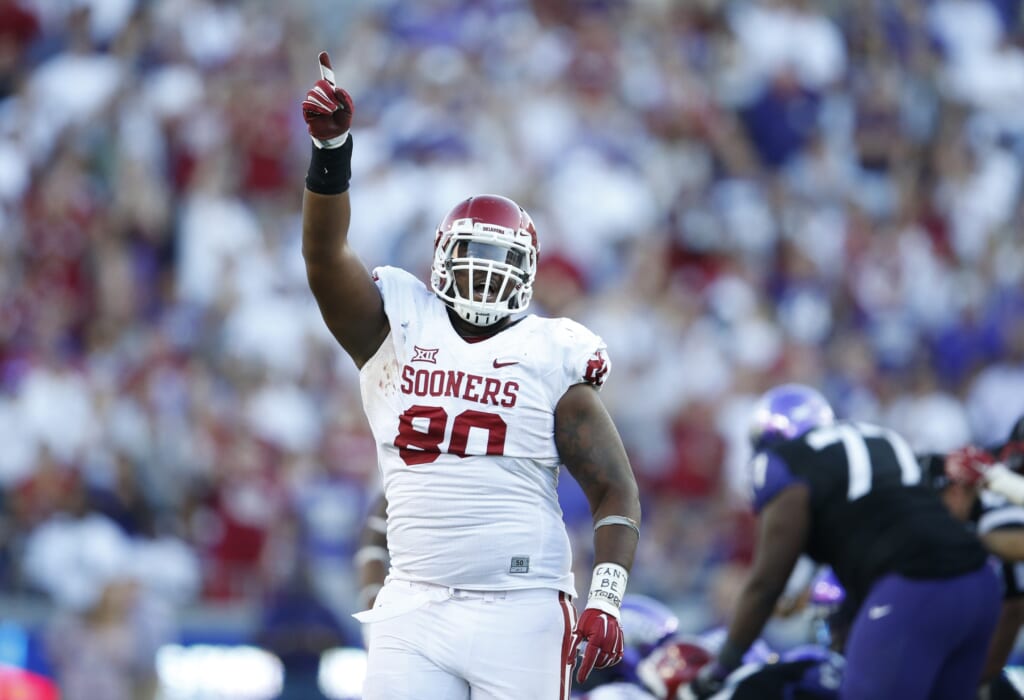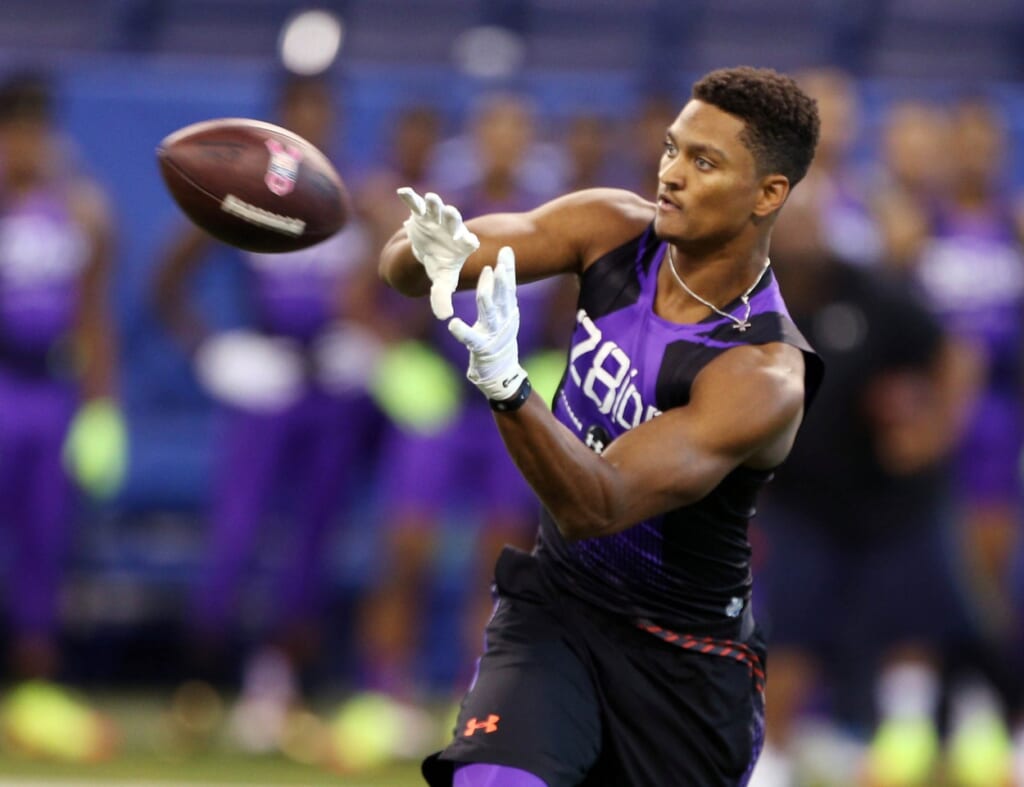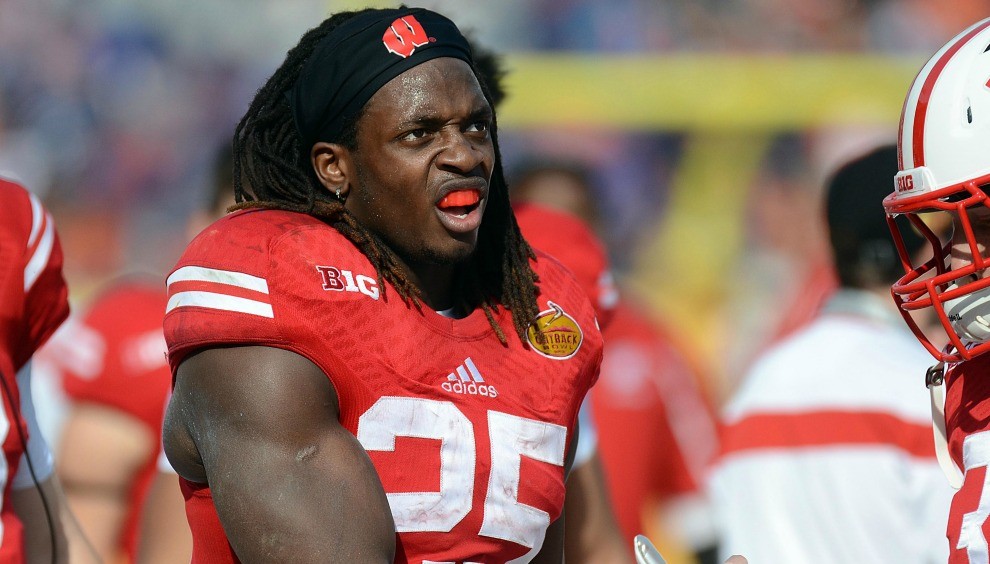
The NFC North is in a transition phase—or at least three of its four teams are. The Minnesota Vikings are gearing up for a second season with quarterback Teddy Bridgewater and head coach Mike Zimmer, a year that will provide important clues about how both men’s careers will play out. The Chicago Bears are retooling under new head coach John Fox, going so far as to switch from their longtime 4-3 defensive base to a 3-4 under coordinator Vic Fangio. Quarterback Jay Cutler remains, as do the questions surrounding whether he’s tapped all the potential he possesses—and he’ll have to prove doubters wrong without wide receiver Brandon Marshall, whom the Bears traded to the New York Jets in March.
The Detroit Lions are preparing for life without Ndamukong Suh and Nick Fairley on the defensive line. These two subtractions were mitigated somewhat when the team acquired Haloti Ngata from the Baltimore Ravens, but Detroit’s front seven is still far less intimidating than it was a year ago. The only team that seems mostly unchanged is the stalwart Green Bay Packers. They have roster needs to fill via the draft, but their issues appear less glaring and less urgent than their NFC North compatriots.
Given the events that have transpired since the close of the 2014 season, the NFC North clearly has some work to do in the upcoming NFL draft. Here are the outcomes that each team would welcome most this year.
Chicago Bears

Defense has been the anchor weighing down Chicago for years now, particularly the play of the front seven. It cannot stop the run, it cannot rush the passer and now it must try to do both far better than it has while adapting to a Fangio-coached 3-4 base. The Bears have already done important work to address their defensive weakness, most notably signing free agent pass-rusher Pernell McPhee, but they need to get younger and more talented overall. Signings like Ray McDonald have a limited ceiling.
Chicago holds the seventh-overall pick in Round 1 and can go in numerous directions. They could select a replacement for wide receiver Brandon Marshall; they could take one of the draft’s top nose tackles like Arik Armstead or Danny Shelton; they could upgrade their pass-rush; they could even add to the ranks at safety and cornerback.
At some point, the Bears will address all of these positions. And they could easily find the right players, since they have high-round picks. Taking a premier nose tackle won’t prevent them from finding a talented wideout in Rounds 2 or 3. Opting for a pass-rusher in Round 1 will still afford Chicago the opportunity to upgrade the defensive line later, and so on. Wide receiver, in particular, is a deep position this year, so the Bears don’t need to take Kevin White or Amari Cooper at No. 7, lest they risk missing out on a playmaker.
Ultimately, if the Bears can add at least one weapon to help quarterback Jay Cutler revive his career and enough ammunition to no longer have a laughingstock defense once the season begins, they’ll be in good shape to start to turn their fortunes around.
Detroit Lions

Let’s see—with no Ndamukong Suh, no Nick Fairley it seems pretty likely that Detroit will be adding defensive linemen to their roster via the 2015 draft. Though they did bring in former Raven Haloti Ngata, he may only be a one-year contributor. D-line will be the Lions’ biggest priority. The good news for Detroit is that this year’s draft boasts a number of talented defensive linemen—both at end and tackle. The bad news, however, is that the Lions pick late in Round 1 and a number of the best defensive players will already be off the board. That might mean no Shelton or Malcom Brown, though it could make Armstead, Eddie Goldman or Jordan Phillips the top options.
But the defensive front isn’t the only area the Lions need to pay attention to in this year’s draft. Running back is a decidedly thin position for the team right now. Though they could easily rely on a one-two punch of Joique Bell and Theo Riddick, the propensity for injuries at the position and the exceptionally deep running back class has the Lions likely tabbing a young ball-carrier in Round 3.
That sounds fine, except Detroit no longer has picks in Rounds 4 or 5, having traded them to the Ravens for a year with Ngata. Given the multiple needs in the trenches and the fact that the Lions need to add at least one cornerback of note, running back may be more of a late-round pick out of necessity. Defense is, after all, Detroit’s calling card. Having a flashy young back means nothing if the Lions take significant steps backward in their ability to rush passers and stuff runners.
Green Bay Packers

Green Bay has the fewest glaring roster shortcomings of any NFC North team. That doesn’t mean, though, that they can sit back during the draft and pick players at random. They do have some areas they must address, it’s just that they don’t have as many—or as urgent—needs as their divisional counterparts.
Inside linebacker and cornerback are two positions the Packers will be targeting earlier on, with cornerback the likely position taken in Round 1 and inside linebacker coming later. Green Bay lost starting corners Tramon Williams and Davon House to free agency and have another, Casey Hayward, in the last year of his rookie contract. The Packers should be able to find talented cornerback help at the bottom of the first round, whether that player is Washington’s Marcus Peters, Wake Forest’s Kevin Johnson or LSU’s Jalen Collins.
At inside linebacker, the Green Bay has a number of options. The franchise can take one in Rounds 2 or 3 with little issue, given that the position is far less coveted around the league than their flashy, pass-rushing contemporaries on the outside. The Packers could take anyone from UCLA’s Eric Kendricks to TCU’s Paul Dawson, Miami’s Denzel Perryman to Alabama’s Trey DePriest in the second or third and be quite happy. This would allow Green Bay to move Clay Matthews back to outside linebacker, where he plays best.
The Packers could also be interested in bringing another tight end onto the roster because they presently have just three. Two of them, Andrew Quarless and 2014 draftee Richard Rodgers, both saw significant playing time last year, but it’s also possible that Green Bay would like an upgrade at the position. There aren’t a lot of top-tier tight ends—players in the mold of Rob Gronkowski or Jimmy Graham—but there are some mid-round gems to be had if the Packers are into “old-school” style tight ends that block and catch. Some of these jacks-of-all-trades include Penn State’s Jesse James, Florida State’s Nick O’Leary and Ohio State’s Jeff Heuerman.
Minnesota Vikings

With one year of head coaching experience under his belt, it’s time for Mike Zimmer to start building his defense in his own image, much like he did during his time as coordinator for the Cincinnati Bengals. That starts with the linebacking corps, a group that has done without a true middle linebacker since the 2012 departure of E.J. Henderson.
No longer should outside ‘backers need to play out of position should the Vikings address this crucial position at some point in the draft. Granted, inside linebacker isn’t a sexy position. Because of this, the Vikings can wait until Round 2 or even 3 to bring one on. Much like the Packers, the Vikings could set their sights on Kendricks, Dawson, Perryman or DePriest on Day 2.
Running back projects to be a big need for the Vikings as well, assuming they aren’t able to retain the services of Adrian Peterson. The 30-year-old is set to make $13 million this year, which makes him hard to trade, but something could easily be worked out given six teams (not including the Vikings) are reportedly in the race for his services.
Even if Peterson remains in Minnesota, it’s not going to be a happy marriage. The Vikings would be smart to pick up a running back this year, no matter what. Luckily, it’s a deep class. They could make a splash in Round 1 to get Georgia’s Todd Gurley or Wisconsin’s Melvin Gordon—especially if Peterson is already elsewhere by that time—but consequent to the position’s depth, drafting a back something Minneota can delay until later.
A better use of the Vikings’ Round 1 pick would be on a cornerback. Captain Munnerlyn and Xavier Rhodes should reprise their roles as starters this year, but finding a young, developmental prospect would help the Vikings in the long term. And considering Zimmer’s history in Cincinnati of stockpiling high-round corners—both veterans and rookies—it would certainly fit his pattern. The Vikings pick 11th overall in Round 1, giving them the perfect opportunity to draft Peters or Michigan State’s Trae Waynes should they have the interest.
Photo: USA Today Sports